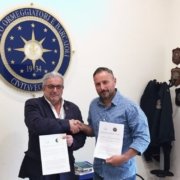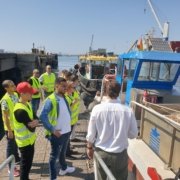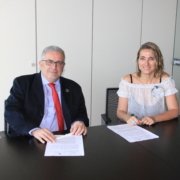Blue Innovation – Container 42
Following a nice and (hopefully for all of you) relaxing summer, we have begun thinking again about innovation it the Blue Economy and any novelties that would be worth highlighting. For this issue of the Odiseo we have decided to revisit the container (following our article on the SmartBox), and decided to explore Container 42.
Digitisation and technology continue to make headlines with increasing frequency in a classic sector that seeks to optimize its performance, no longer focusing on gigantism but thinking about improved processes and relying on new technological proposals.
The newest challenge is to mesh data and processes together to obtain more efficient operations, sustainability and better services.
Under the initial joint venture of IBM, Cisco, Esri, Axians and the Port of Rotterdam, today there are 18 companies (see the full list at https://weare42.io/partners/) that have joined to create Container 42, a research and technologically innovative project that seeks to increase the safety, sustainability and efficiency of container movement. Under the premise of knowing what a cargo container experiences during intermodal journeys, Container 42 is a hyperintelligent tool that registers everything and is adapted with sensor technology that transmits, in real time, information pertaining to vibrations, pitch, noise, air pollution, humidity, internal and external temperature, internal movement of the cargo and the exact global position of the container. In addition, the container has been equipped with solar panels on its top cover to measure the amount of energy that can be produced, as well as with 42 cameras that record the movements of and surrounding the unit.
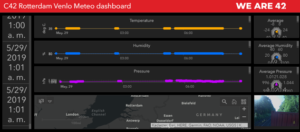
Source: https://weare42.io/data/
The premise is that all this data is to be collected, and will yield positive results to make sure that the different actors involved in the operation of the container can measure parameters, optimize processes, improve the quality of services and be more efficient with the environment.
Currently the plan is for Container 42 to do a 2 years long intermodal journey in order to do carry out accurate analyses within the routine of a regular container. The official launching was at Rotterdam on May 24, 2019, and it has left to Munich for the International Transport Logistic exhibition to begin the journey right after the event.
This system installed on the Container has the potential to outperform the authorities along its journeys, as it is programmed to set off alarms when the parameters of the container are changed or its doors are opened. It also helps to optimize logistic chains by constantly updating data, which would allow to diminish (or eliminate completely) uncertain predictions or to visually verify the cargo in real time.
With such thorough tracking and control, it leaves those involved with the container and the cargo with nearly absolute certainty and security. Moreover, beyond the container’s contribution to the logistics chain and the possibility of linking its operations with blockchain, in the event that any incident with the unit is recorded, thanks to a precision of information, it would be much easier to troubleshoot incidents and be aware of all of the risks or breakdowns. On the other hand, the container could also be part of an integral customs self-management system, as with all of the information digitalised, the cargo data can be transferred for faster customs management, and eliminate inspections of containers that are digitally guaranteed not to be opened.
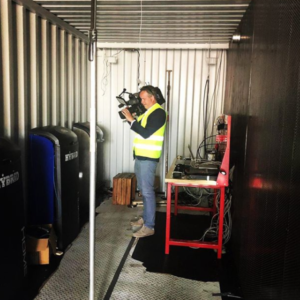
Source: https://shippingandfreightresource.com/container-42-smartest-container-on-the-planet/
The first step in this initiative has been taken. Knowing what happens to a container during its voyage will soon cease to be an uncertainty (although some shipping companies already have limited monitoring and security services among others for the cargo they transport). However, it must be recognized that digitising each unit will take time due to the investment and motivation that the carriers would need to take the necessary steps to implement the technology. Even so, in a world where we know exactly the position of our food delivery biker, how strange is it that we do not know precisely the condition and position of goods valued in thousands of dollars?
Written by:
- Vanessa Bexiga, Operations Manager (Escola Europea – Intermodal Transport)

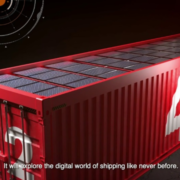
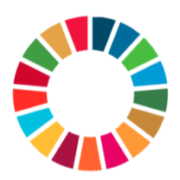

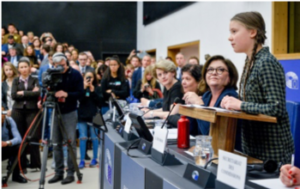
 ace, including those related to poverty, inequality, climate change, environmental degradation, prosperity, peace and justice. The Goals are interlinked and, if we are not to leave anyone behind, it is important that we attain each Goal by 2030.
ace, including those related to poverty, inequality, climate change, environmental degradation, prosperity, peace and justice. The Goals are interlinked and, if we are not to leave anyone behind, it is important that we attain each Goal by 2030.
 Grimaldi presents vessels that contaminate less during port stays, and has begun associating itself with the Clean Shipping Alliance 2020 (CSA 2020). CSA 2020 defines itself as a group of leading companies from the commercial shipping and cruise industries that have been leaders in emission control efforts and have made significant investments in research and analysis, funding and committing resources to comply with 2020 fuel requirements through the development and use of Exhaust Gas Cleaning Systems (EGCS).
Grimaldi presents vessels that contaminate less during port stays, and has begun associating itself with the Clean Shipping Alliance 2020 (CSA 2020). CSA 2020 defines itself as a group of leading companies from the commercial shipping and cruise industries that have been leaders in emission control efforts and have made significant investments in research and analysis, funding and committing resources to comply with 2020 fuel requirements through the development and use of Exhaust Gas Cleaning Systems (EGCS).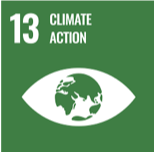
 Aristotle considered that attaining the fullness of the expression of human capabilities is the meaning and end of every individual.
Aristotle considered that attaining the fullness of the expression of human capabilities is the meaning and end of every individual.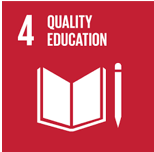 Quality education understood as a duty for life. Our education and that of those who at some point depend on us: children, employees, relatives. Let us value having been born into a society that has provided us with access to exceptional education.
Quality education understood as a duty for life. Our education and that of those who at some point depend on us: children, employees, relatives. Let us value having been born into a society that has provided us with access to exceptional education. Gender equality is not only a fundamental human right, but the necessary foundation for a peaceful, prosperous and sustainable world. A society, organization or person who does not understand that we all have the same rights and obligations is ill. If you have to hire, pay, distribute and organize the work always seek this equality.
Gender equality is not only a fundamental human right, but the necessary foundation for a peaceful, prosperous and sustainable world. A society, organization or person who does not understand that we all have the same rights and obligations is ill. If you have to hire, pay, distribute and organize the work always seek this equality.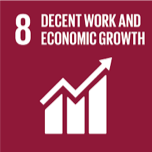
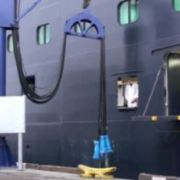
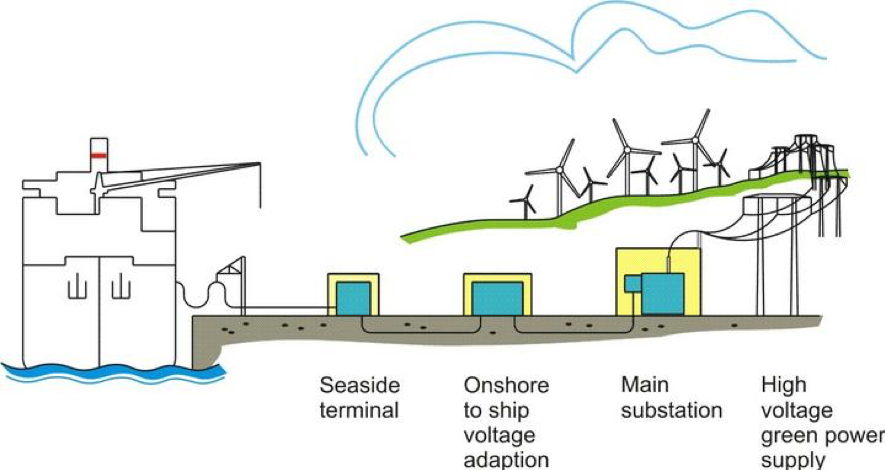

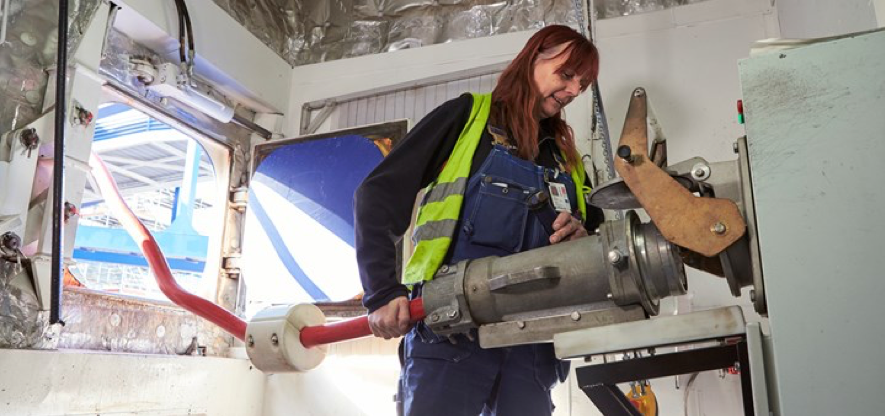

 DG-MOVE
DG-MOVE
